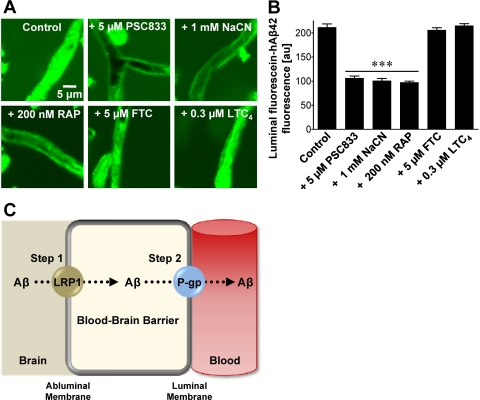Fig. 1.
P-glycoprotein mediates hAβ42 transport in mouse brain capillaries. A, representative confocal images of brain capillaries isolated from wild-type mice. Capillaries were incubated with 5 μM fluorescein-hAβ42 for 1 h alone (control) or with 5 μM fluorescein-hAβ42 plus PSC833 (P-glycoprotein inhibitor), NaCN (metabolic inhibitor), RAP (LRP1 inhibitor), FTC (BCRP inhibitor), or LTC4 (MRP inhibitor). B, capillary luminal fluorescein-hAβ42 fluorescence after image analysis. Residual fluorescence is caused by nonspecific binding (Hartz et al., 2008). Data represent mean ± S.E.M. for 10 capillaries from one preparation (pooled tissue from 10 wild-type mice). Shown are arbitrary fluorescence units (scale 0–255). ***, significantly lower than control, P < 0.001. C, proposed two-step mechanism of blood-brain barrier Aβ efflux involving the Aβ receptor LRP1, on the abluminal membrane and the efflux transporter, P-glycoprotein, on the luminal membrane of brain capillaries.

